I have a list of arrays.
[array([ 2., 4., 6., 8., 10., 12., 14., 16., 18.,
20., 22., 24., 26., 28., 30., 32., 34., 36.,
38., 40., 42., 44., 46., 48., 50., 52., 54.,
56., 58., 60., 62., 64., 66., 68., 70., 72.,
74., 76., 78., 80., 82., 84., 86., 88., 90.,
92., 94., 96., 98., 100.]), array([ 4., 8., 12., 16., 20., 24., 28., 32., 36.,
40., 44., 48., 52., 56., 60., 64., 68., 72.,
76., 80., 84., 88., 92., 96., 100.]), array([ 8., 16., 24., 32., 40., 48., 56., 64., 72., 80., 88.,
96.])]
I have tried np.vstack to stack the list array by array. But because the arrays are not of equal size (ie, different number of columns), I received this error:
ValueError: all the input array dimensions except for the concatenation axis must match exactly
I do not want to concatenate them because I want to store the rows for future computations. How can I stack them row by row if the rows are ragged?
Edit: Is it possible to concatenate along a variable axis for this purpose?
